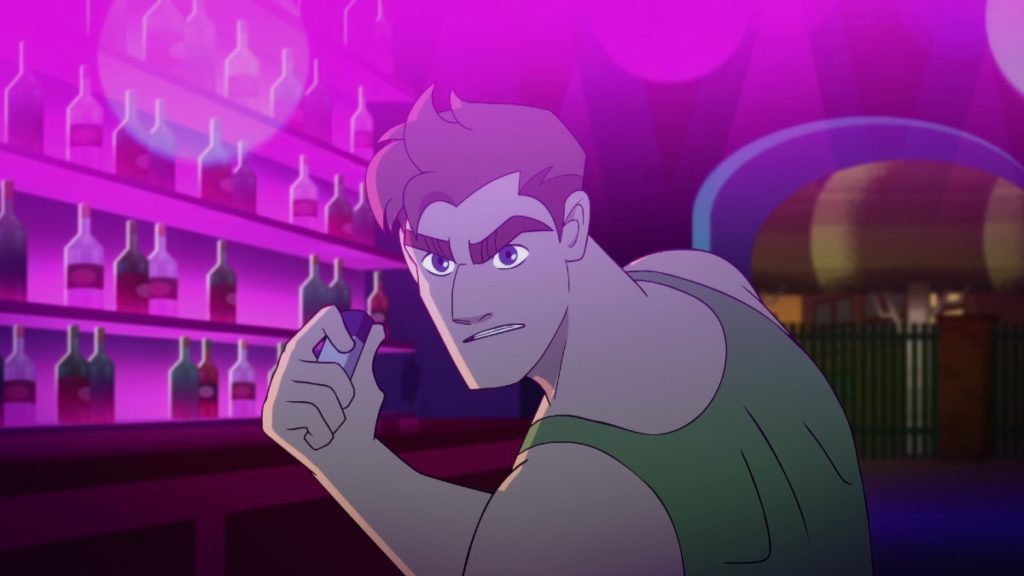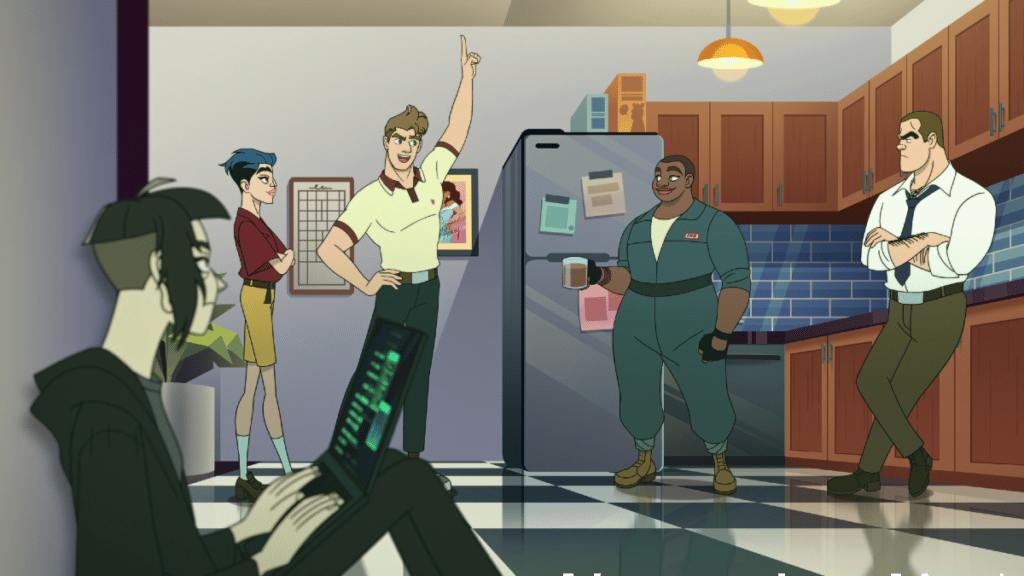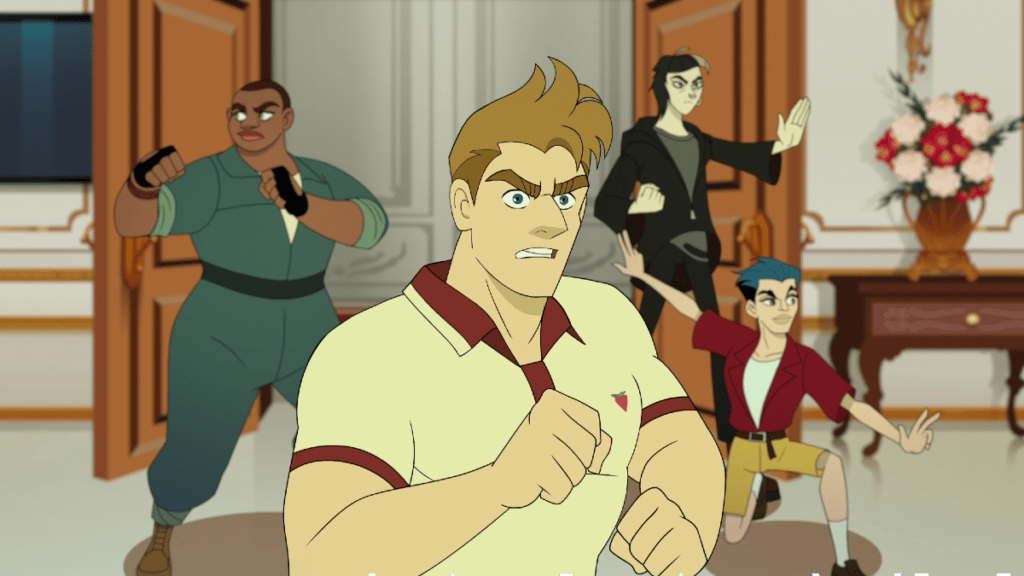Read also:
How to Watch FX Live Without CableHow To Watch AMC Without CableHow to Watch ABC Without CableHow to Watch Paramount Network Without CableSean Hayes and Michael Schur’s animated comedy is splendidly queer but would benefit from a wider perspective.
As a queer child of the early Internet, I’ve seen my fair share of gay erotic animation. Netflix’s new adult animation series, Q-Force, might be one of the best.
When Golden Boy of the American Intelligence Academy (AIA) Steve Maryweather (voiced by Sean Hayes) uses his 2011 valedictorian speech to come out, it doesn’t go as planned. Despite the recent repeal of “Don’t Ask Don’t Tell,” his superiors and colleagues are far from supportive and banish him to the gay wasteland of the West Hollywood (WeHo) branch.
In the ten years between the prologue and the opening of the series, Steve does not receive a single mission. But what he does have is a motley crew of other queer spies. There’s Deb (Wanda Sykes), the bold, brave, and butch transportation expert. Stat (Patti Harrison) is a nonbinary hacker who thrives on cynicism and taurine. Twink (Matt Rogers), the flaming master/mistress of disguise, rounds out this loving family of stock characters. Once they pick up the trail of Russian terrorists operating inside the US, their bonds and talents will be put to an international test to prove that queers can do anything and sometimes do it better than straights.

Showrunners Hayes and Michael Schur are committed to animating a wide variety of bodies for their ragtag group of spies. The series loves itself some nudity, so these are not just outlines; they are fleshy, self-possessed, and sexual. The most impressive aspect of Q-Force is its willingness to sketch sex and desire as an integral part of queerness, insist that it isn’t just something limited to stereotypically hot people, and render all of it in vibrant 2-D animation.
Animation is an exciting medium for this sort of storytelling. It enables Q-Force to work with a hybrid of flamboyant and pulpy visual storytelling. And it showcases the medium’s versatility with Twink. As a master of drag-disguise, they’re able to fully become whoever they want to be, be it Ariana Grande, Julia Roberts, or a cute hacker chick. As an animated series for adults, it can fully lean into gags and truly push the boundaries of what we expect to see in spy stories, in animation, and on Netflix.
The voice cast seems to be having a blast with this oddball show. Wanda Sykes has long cemented herself as a talented voice artist, so her craftwork here comes as no surprise. Though she’s also no stranger to voice work, Laurie Metcalf’s work on this series as the tough and motherly Deputy Director V is outstanding. Her wry delivery and dynamic sensitivity make what could be just a telecopy of the late, great Jessica Walter’s Malory Archer into someone unique.
The most impressive aspect of Q-Force is its willingness to sketch sex and desire as an integral part of queerness.
Hayes gets to act against type and develop a well-shaded masculine character, a hunk with a heart of gold. Hayes, as a mainstay of queer media for over three decades, is a kind of queer elder that his generation didn’t have because of the AIDS crisis. It’s genuinely heartwarming that this series emphasizes the importance of re-engaging different queer generations with each other—underscored by having a queer elder like Hayes voice the team’s leader. When Steve teaches his younger queer teammates about Queer culture and history, it’s very much Hayes doing the same to young queers watching Q-Force.
Since the Q-Force team is made up of diverse ages, we get a large array of historical allusions. And I love any chance to teach the children their history. It’s not just top-down either. Twink and Stat get to do their fair share of educating too, keeping Steve and Deb informed about the younger generation’s zeitgeist or waking their straight supervisor Buck (David Harbour) to his ignorance.

While these references run this historical gamut, they still center cis white gay culture as “queer culture.” The jokes and scenarios don’t highlight diverse cultural experiences, they draw from the same pool of jokes about Diva worship, drag solely via RuPaul, and brunch being a human right. In trying to script a series where everyone feels like a community, the writers have whitewashed the queer cultural imagination so that all the characters are on the same page.
For a series boldly determined to play inside baseball with its content for (white) queer viewers, Q-Force awkwardly tries to force acceptance and assimilation as important to these characters as well, especially Steve. It’s a very real drive to want to prove to one’s straight coworkers and family that you are capable and even able to exceed their homophobic expectations of you. But it’s a shame that Q-Force is working to prove themselves to the American Military. It deals a deadly sour blow every time we’re reminded.
Though it will try to expose a dark underside of the AIA or WeHo, it’s always with the intent to reform or ends up completely forgotten. Q-Force is going to say that it’s a radical new team in the game of adult animated serials, and in some ways it is. Hot and humorous cartoons for queers by queers are still sadly few and far between. But it feels like, for that to happen, the team had to hold itself ransom. All of the labor Q-Force and those creating them put into being representational is tragically undone by its lip service to the violent regimes that actively threaten the target demographic for the show.

Q-Force is a reminder that representation means more than drawing with different colors. It’s about understanding that, with those choices, there are human lives lived, different experiences had, and cultures created, with different needs and motivations. Representation requires advocation—doing the work to making sure you’re representing the political goals of all the constituents in your conversation.
Animation is a terrific medium in which to do this because of its flexibility and endless possibilities. If future seasons of Q-Force manage to combine its vibrant style and inter-generational bridge-building with a deeper commitment to the human diversity of its community, it will be much queerer and make a much more forceful impact.
Q-Force begins its mission on September 2nd on Netflix.